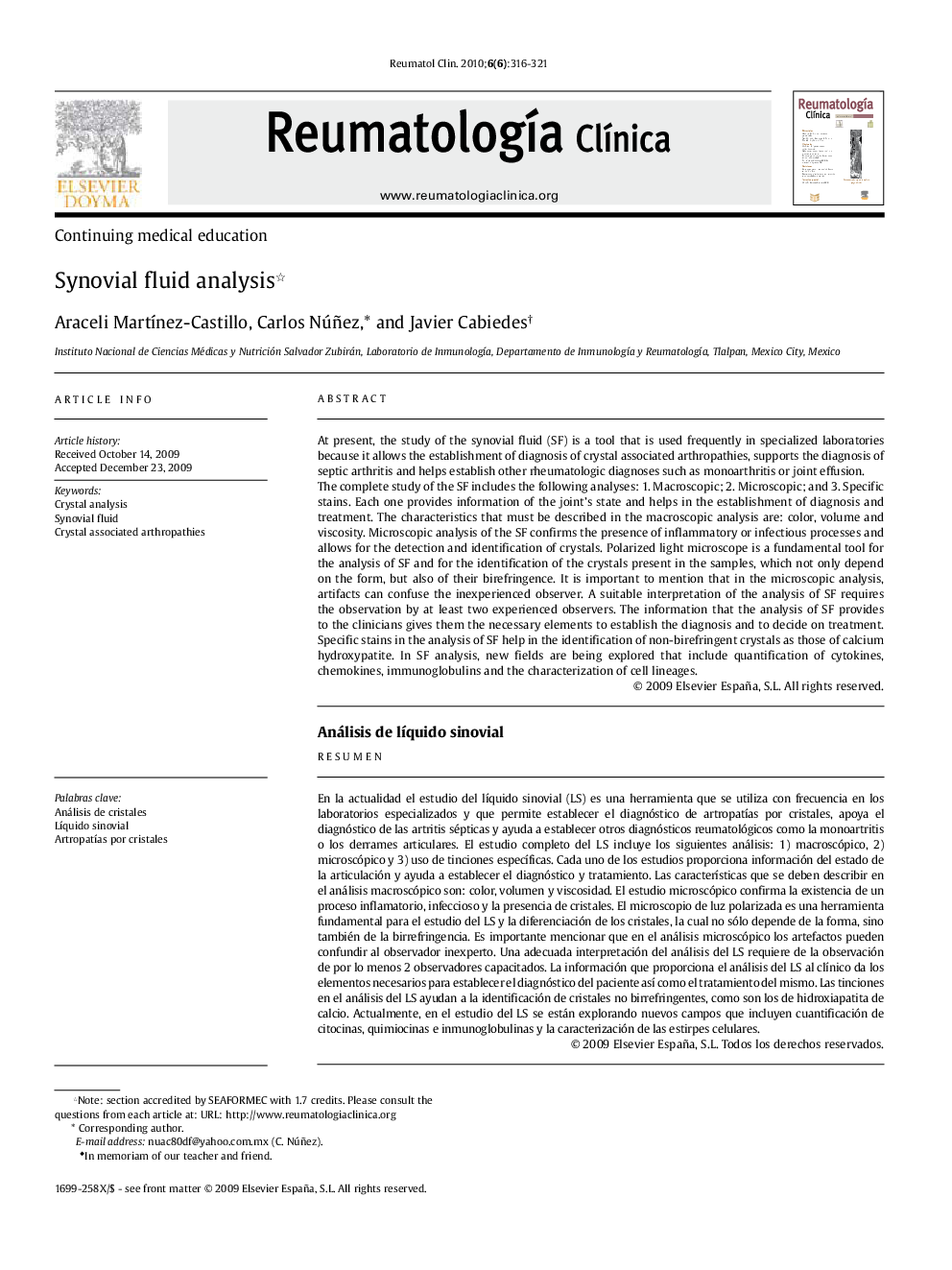| Article ID | Journal | Published Year | Pages | File Type |
|---|---|---|---|---|
| 3384534 | Reumatología Clínica (English Edition) | 2010 | 6 Pages |
At present, the study of the synovial fluid (SF) is a tool that is used frequently in specialized laboratories because it allows the establishment of diagnosis of crystal associated arthropathies, supports the diagnosis of septic arthritis and helps establish other rheumatologic diagnoses such as monoarthritis or joint effusion. The complete study of the SF includes the following analyses: 1. Macroscopic; 2. Microscopic; and 3. Specific stains. Each one provides information of the joint's state and helps in the establishment of diagnosis and treatment. The characteristics that must be described in the macroscopic analysis are: color, volume and viscosity. Microscopic analysis of the SF confirms the presence of inflammatory or infectious processes and allows for the detection and identification of crystals. Polarized light microscope is a fundamental tool for the analysis of SF and for the identification of the crystals present in the samples, which not only depend on the form, but also of their birefringence. It is important to mention that in the microscopic analysis, artifacts can confuse the inexperienced observer. A suitable interpretation of the analysis of SF requires the observation by at least two experienced observers. The information that the analysis of SF provides to the clinicians gives them the necessary elements to establish the diagnosis and to decide on treatment. Specific stains in the analysis of SF help in the identification of non-birefringent crystals as those of calcium hydroxypatite. In SF analysis, new fields are being explored that include quantification of cytokines, chemokines, immunoglobulins and the characterization of cell lineages.
ResumenEn la actualidad el estudio del líquido sinovial (LS) es una herramienta que se utiliza con frecuencia en los laboratorios especializados y que permite establecer el diagnóstico de artropatías por cristales, apoya el diagnóstico de las artritis sépticas y ayuda a establecer otros diagnósticos reumatológicos como la monoartritis o los derrames articulares. El estudio completo del LS incluye los siguientes análisis: 1) macroscópico, 2) microscópico y 3) uso de tinciones específicas. Cada uno de los estudios proporciona información del estado de la articulación y ayuda a establecer el diagnóstico y tratamiento. Las características que se deben describir en el análisis macroscópico son: color, volumen y viscosidad. El estudio microscópico confirma la existencia de un proceso inflamatorio, infeccioso y la presencia de cristales. El microscopio de luz polarizada es una herramienta fundamental para el estudio del LS y la diferenciación de los cristales, la cual no sólo depende de la forma, sino también de la birrefringencia. Es importante mencionar que en el análisis microscópico los artefactos pueden confundir al observador inexperto. Una adecuada interpretación del análisis del LS requiere de la observación de por lo menos 2 observadores capacitados. La información que proporciona el análisis del LS al clínico da los elementos necesarios para establecer el diagnóstico del paciente así como el tratamiento del mismo. Las tinciones en el análisis del LS ayudan a la identificación de cristales no birrefringentes, como son los de hidroxiapatita de calcio. Actualmente, en el estudio del LS se están explorando nuevos campos que incluyen cuantificación de citocinas, quimiocinas e inmunoglobulinas y la caracterización de las estirpes celulares.
